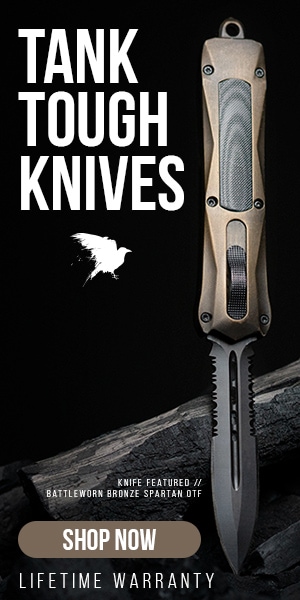War has been an important part of the fabric of human existence since time immemorial. There has not been a time when humankind has not been at war with itself, at least somewhere on the globe, and consequently, a great deal of mythology and symbolism has sprung up around it.
The symbols of war used to represent various facets of human conflict vary, of course, from culture to culture and era to era. Those used by Alexander the Great and his men will inevitably differ, for instance, from those favored by the allied nations of WWII.
Let’s take a look at some of the most eerie symbols used throughout history with reference to war.
The Boar (Celts)

Though wild boar were, at one point, extinct throughout the British Isles, there was a time when there were tens of thousands of the tough, irascible animals to be found in the forests and fens of the islands.
The boar was revered by the native Celts for its strength and ferocity, particularly when it or its young were threatened.
They also valued its meat highly, often offering up boar meat to honored guests as a mark of respect. They would also consume its flesh themselves, believing it would increase their strength and vigor.
Akoben (West Africa)
The Akoben is a West African war horn that came, for the eponymous tribe native to Ghana, to symbolize awareness, vigilance, and hope.
In its original iteration, the horn was a literal, physical one used at the onset of battle. It was used to marshal troops to the battlefield, as well as to warn them that enemy troops were coming and thus to prepare for an attack.
The horn has since become a popular symbol not only of war but of the three virtues mentioned above.
It is generally rendered as three coils with a comma-like shape sitting atop them and is often used as a design in West African jewelry.
Tutankhamun’s Dagger (Ancient Egypt)
Tutankhamun needs precious little introduction – since the discovery of his tomb in the 1920s and the alleged curse that followed the explorers who found it, he’s become quite possibly the most famous Egyptian pharaoh that ever lived.
Tutankhamun was not, in fact, a particularly notable pharaoh. He was sickly and died young, and aside from a few religious reforms, his reign accomplished little.
That said, the dagger found in his opulent tomb by archaeologist Howard Carter was a remarkable weapon in its own right and a powerful symbol of war.
The dagger is made of meteoric iron – a vanishingly rare material – and so was highly coveted as a valuable and potent weapon.
Tsantsa (South America)
Few symbols of war are as chilling or unnerving as the tsantsa of South America. Better known to Western audiences as shrunken heads, these war curios held not only symbolic significance in a martial capacity but also a spiritual one.
The tribes of the Amazon – particularly those of Ecuador – believed that when they slew an enemy, part of his soul would rise to avenge him.
This could only be prevented by sealing that soul within his head – which necessitated the practice of head-shrinking.
Not only would they be protected from the vengeful soul, but they could also bind the soul to themselves, forcing it to become their defender.
The process for shrinking a head involved sewing seeds under the skin and boiling it. Once it was ready, it would be worn as a battle charm.
The Western world developed a fascination with shrunken heads, and there soon developed a market for them.
To cope with the demand, Amazonian tribespeople soon began manufacturing spurious heads, some taken from monkeys and bodies in morgues.
Mjölnir (Scandinavia)
This mighty Warhammer needs precious little introduction, being as it is world-famous in the wake of Marvel’s Thor movies.
But while it may be most famous for its association with Chris Hemsworth’s brawny superhero, the fact is that the legend of Mjölnir goes back much further than Marvel’s frothy popcorn franchise.
The mythological hammer was not merely used as a symbol of war in Norse culture but was also a common artifact used to bestow blessings upon the faithful.
It was an extremely common design for jewelry through the 8th-11th centuries CE, and it was fashioned in a variety of materials – commoners might have wooden Mjölnir pendants, for instance, while wealthier Vikings might have hammer pendants fashioned of gold or silver.
These days, you might find the symbol being worn by one of Scadinavia’s many elite military units, such as the all-female Jegertroppen.
Vajra (Buddhism And Hinduism)
This ritual weapon is more ornamental than practical, but it has powerful symbolic significance for both Buddhists and Hindus and sees extensive representation not only in India but in other Buddhist countries like Thailand.
The Vajra is a kind of mace with a ribbed, sphere-shaped head. It symbolizes the properties of a diamond (and thus indestructibility) and a bolt of lightning (representative of untrammeled power). In Hinduism, it is considered one of the most powerful weapons in the world. Its use in Buddhism is much more abstract and symbolic.
Mitsu Tomoe (Japan)
The stark tripartite design of the Mitsu Tomoe is well known even to those who have only a passing knowledge of Japan. The design is commonly featured on samurai banners and has seen massive exposure in popular culture as a result of Western interest in samurai and their trappings.
The design itself is symbolic of Heaven, Earth, and the Underworld. It’s representative of the Shinto-derivative deity of archery and war, Hachiman, whom samurai took up as their patron god. He was not only worshipped by samurai but also by many of the peasant castes, such as farmers and fishermen.
Almost Every Culture Has Developed Symbols of War
Though this is by no means an exhaustive list of the many symbols of war that have been used throughout history since time immemorial, we hope it has given you an insight into the various ways that humankind reveres, fetishizes, and otherwise incorporates its idea of war into their cultures.
Whether that entails the ritualistic embalming of a slain enemy’s head or the stylization of ancient war horns, every culture has found ways to incorporate its understanding of war into its practices and rituals. And, as we have seen, that has led to some fascinating cultural artifacts.

